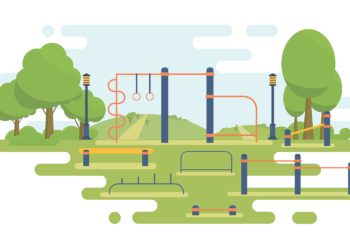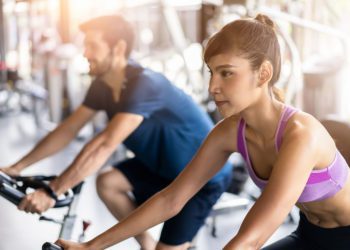In recreation design a lot of thought and effort is put into the size of spaces, the type of equipment, and the materials applied within these spaces, but perhaps the most important factors to consider in designing highly utilized recreation spaces are 1) The visibility of these spaces and 2) The variety of equipment within them. Taking both spatial visibility and variety of equipment into account is critical to creating a welcoming recreation space for all kinds of users.
Most recreation centers are designed to have various types of spaces for exercise and wellness — from spinning and dance studios to cardio machines and free weights. Often times however, when owners furnish individual spaces they may select only one brand or style of equipment to populate the space. Instead, consider having multiple brands of the same machine, so users can personalize their experience with the machine that best suits them. As an added bonus, facility staff can then also easily evaluate preferred vendors and brands in terms of maintenance, durability, and user preference to inform future purchases.
In many facilities there is a spatial efficiency that comes with categorizing equipment types within spaces: putting all the treadmills together for instance or all free weights in one open space cuts down on the required circulation area. However, dispersing different types of equipment and fitness spaces throughout a facility can give a user additional options to customize her workout, allowing her to engage with fitness on her own terms. And dispersing similar equipment throughout a variety of different spaces also allows for a change of scenery for routine users of the facility, keeping them interested in coming back again and again.
Secondly, providing sight-lines to other areas of the recreation space is important because when users can observe others before they engage they often find new equipment, fitness classes, or trends less intimidating. A careful balance of accessibility and privacy that allows users to observe others, learn comfortably, and perhaps look a little silly while trying something new is just as important as having the newest equipment and the most diverse class programming.
In campus recreation the goal is to engage as many users as possible and to retain users in an overall effort to teach healthy exercise habits and support lifelong wellness. Diverse adjacencies between program elements allow users to observe and then engage and diversity in the type of equipment provided and its location throughout the facility allows for users to customize their fitness routine to their personal preferences—two important levers that are too often overlooked.
Emily Parris, LEED AP at Sasaki. For more information visit sasaki.com.










